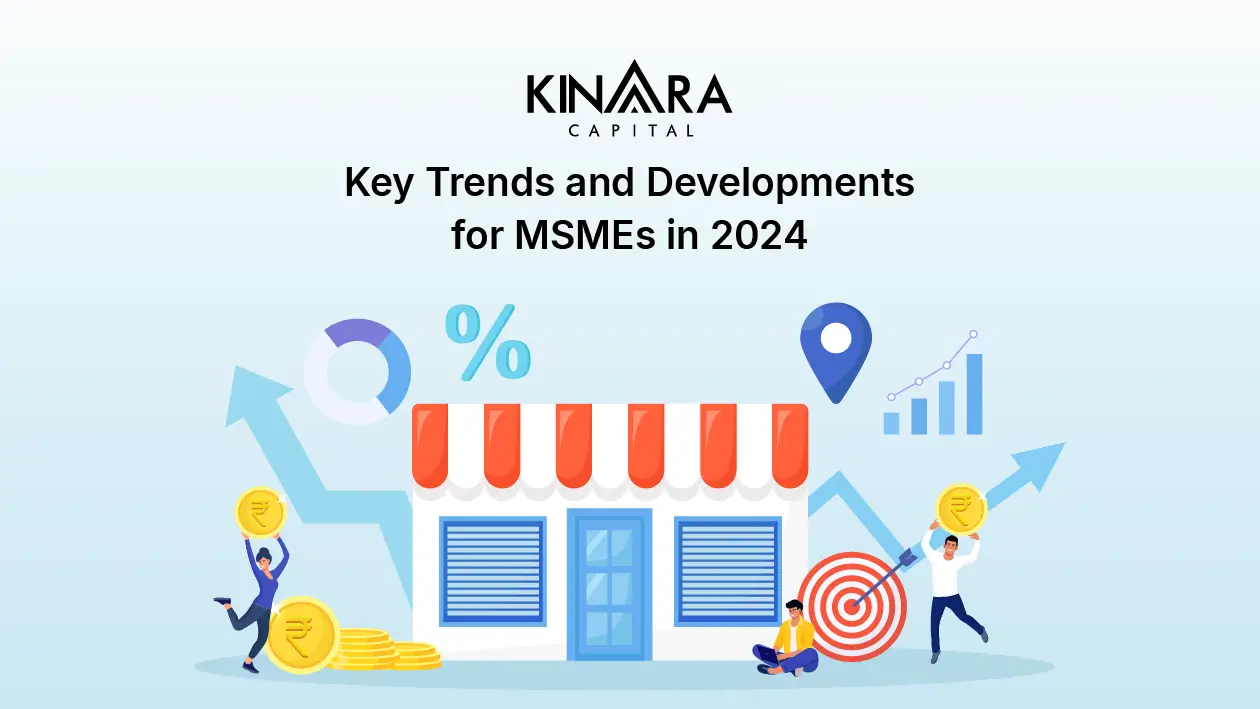
Another year has ended, giving way to the fresh dawn of a new year. It is the time to refresh and recharge the energies to create a fruitful business year. Much like last year, 2024 is also anticipated to witness several major growth trends in the micro, small and medium enterprises (MSMEs) sector. These are critical to the shaping of further the growth strategy for the MSME sector in India, which is positioned to be the key to unlocking India’s economic prosperity.
2024 is expected to be a prolific year for MSMEs, and they can adopt certain trends to sky-high their business.
The landscape for MSMEs (Micro, Small, and Medium Enterprises) is being shaped by several key trends in 2024 that create opportunities as well as in a fast-moving business environment. Recent MSME developments indicate a growing emphasis on digitalisation, sustainability, and innovation, which reflects the evolving needs of businesses and consumers alike.
Some recent developments in the MSME sector include:
With the rise of the digital age, many more MSMEs are now making use of digital technology to improve their operations, customer experiences and maintain competitiveness.
As online shopping continues to grow, many MSMEs are taking advantage of e-commerce platforms to access new markets and expand their reach.
There is an increasing number of small businesses that have taken up sustainable practices to cater to consumer needs while others are committed to reducing their carbon footprint with environmentally friendly practices.
Remote work and flexible hours provide small corporations with an opportunity to access various talents; it helps balance between personal life and work for employees hence reducing overhead costs.
Supporting financial inclusion policies has enabled underserved communities’ MSMEs to afford cheap loans among other financial services, thus propelling the expansion of enterprises leading to economic growth.
To advance entrepreneurship through innovation, governments are implementing measures such as tax incentives, grants and building capacity programs so as to give a boost towards MSMEs
Innovation driven by collaborative efforts among SMEs, industry players or large organisations propagates knowledge sharing, market expansion, and building mutually beneficial relationships that bring about growth.
The role of MSMEs in India‘s economic development remains indispensable, which underlines the importance of fostering an enabling ecosystem that supports their growth and sustainability in the years to come.
The growth and development of MSME in India are extremely important, acting as foundations of the economy. In the future, understanding the possibilities and predictions for MSMEs is crucial to adapt to the evolving business and economic scenarios successfully.
The Indian economy has a vital cornerstone in the MSME sector, which contributes significantly to growth and innovation. As businesses adapt to changing trends and needs of their consumers, the role of leveraging technology becomes paramount for sustainable growth. Despite challenges like competition and inflation, technological advancements empower entrepreneurs to standout from others as well as exploit opportunities in the market.
A progressive sector is foreseen by the Ministry of MSME and advocates for formalisation, technological adoption and creation of new enterprises. Meanwhile, access to capital is essential when upgrading operations or meeting growing market demands in this dynamic landscape. Kinara Capital provides quick and hassle-free business loans without collateral meant to serve the specific needs of MSMEs, thereby facilitating their easy access to funds. With simplified application processes and doorstep service, Kinara Capital empowers micro-enterprises to thrive in constantly changing business environments.
MSMEs should assess their digital capabilities, pinpointing gaps in eCommerce, online marketing, and data management. Planning ahead, they should allocate resources for software, tools, and equipment, favouring scalable, cost-efficient cloud-based solutions. Also, updating staff through online courses ensures they can effectively leverage new technologies.
MSMEs have various help and support to deal with new trends of 2024. Government initiatives offer financial aid and policy support, which will enable MSMEs to adapt to digital transformation and export opportunities. Also, NBFCs provide collateral-free small business loans to help them with technology and machinery upgrades, and hire fresh talents. Trade associations offer mentorship and networking opportunities to help MSMEs stay competitive in the evolving market landscape. Moreover, business incubators provide valuable resources such as office space, mentorship, and funding to support MSMEs in implementing innovative practices and sustainable growth strategies.
Data analytics helps MSMEs in many ways. It helps them understand their customers better so they can create marketing that feels personal. It also helps them figure out how to work more efficiently by looking at numbers that show how they’re doing. And it helps them make decisions about what to sell and how much to charge by studying what’s happening in the market.
To stay competitive in 2024 and beyond, it’s important to use new technologies and listen to what customers want. Making sure customers are happy and building good relationships with them is key. Focusing on one area and coming up with new ideas and innovations are also really important to do well in the market.
Some of the best practices that small businesses can do in 2024 is grow their teams wisely to handle more work and get better results since hiring skilled professionals can bring fresh ideas and expertise to businesses. They should also consider upgrading their equipment to work more efficiently and produce higher-quality products. Getting small business loans can help make these improvements happen by providing the money needed to invest in the business.
Innovation is really important for MSMEs to thrive in this fast-changing world. It helps them be different, attract customers, and stay ahead of competitors. By creating new things or improving how they work, MSMEs can meet what customers want and work better. Innovation also lets them use new technologies and trends, which can help them grow.
MSMEs need to keep up with what customers want in order to do well. If people’s tastes change, small businesses have to change too, or they might lose customers. For instance, if more people want eco-friendly products, MSMEs have to offer them to stay competitive. But it can be hard for MSMEs to afford these changes. So, paying attention to what customers want is really important for small businesses to do well in a changing market.
